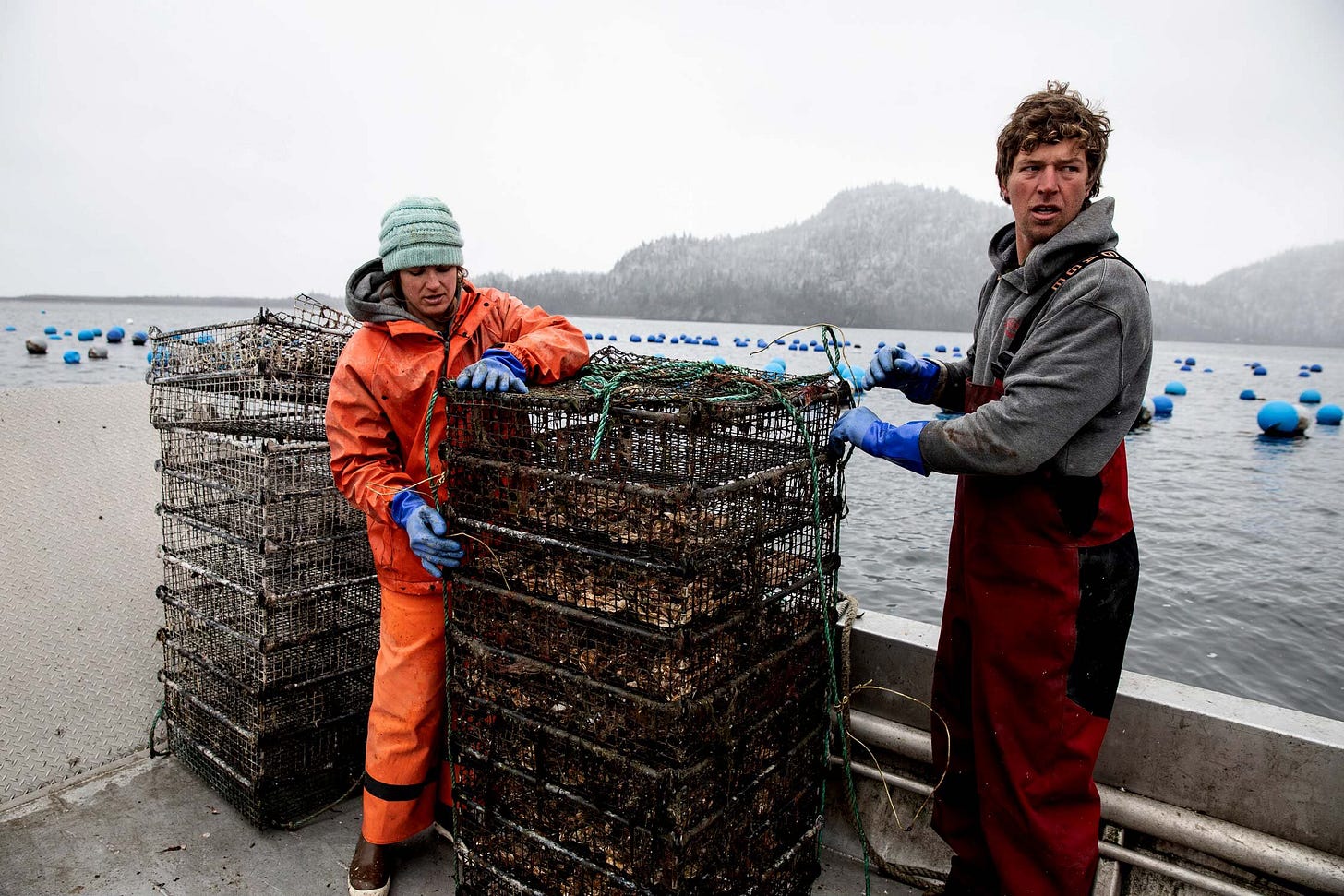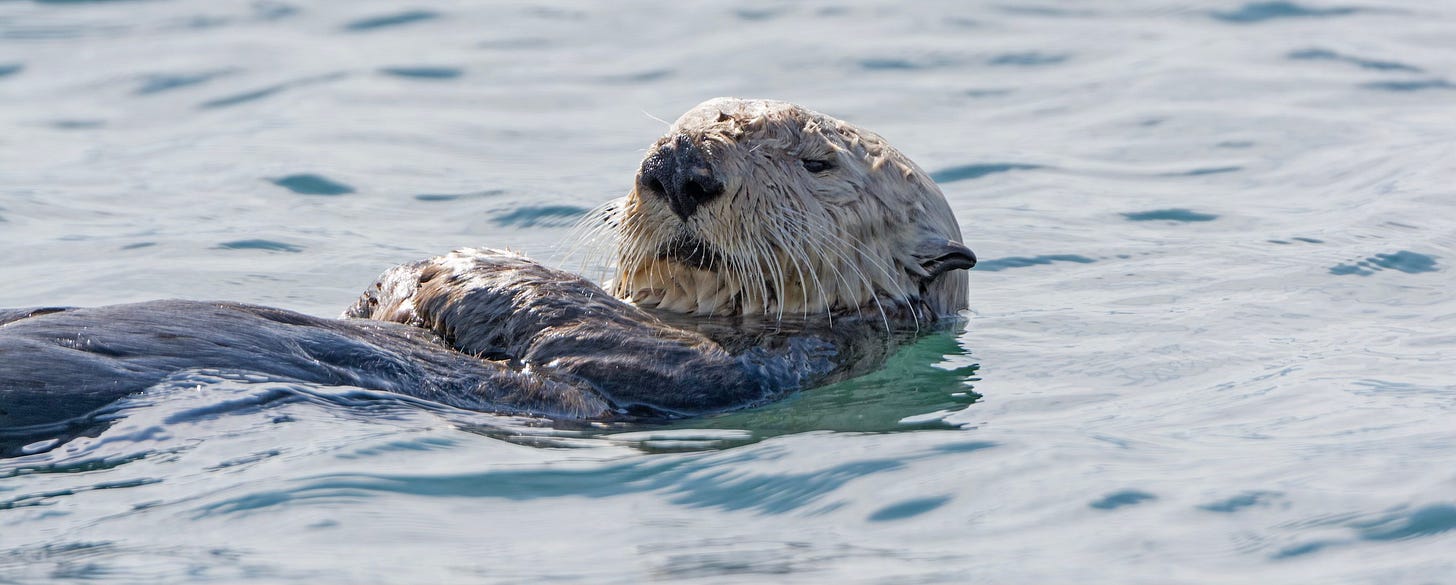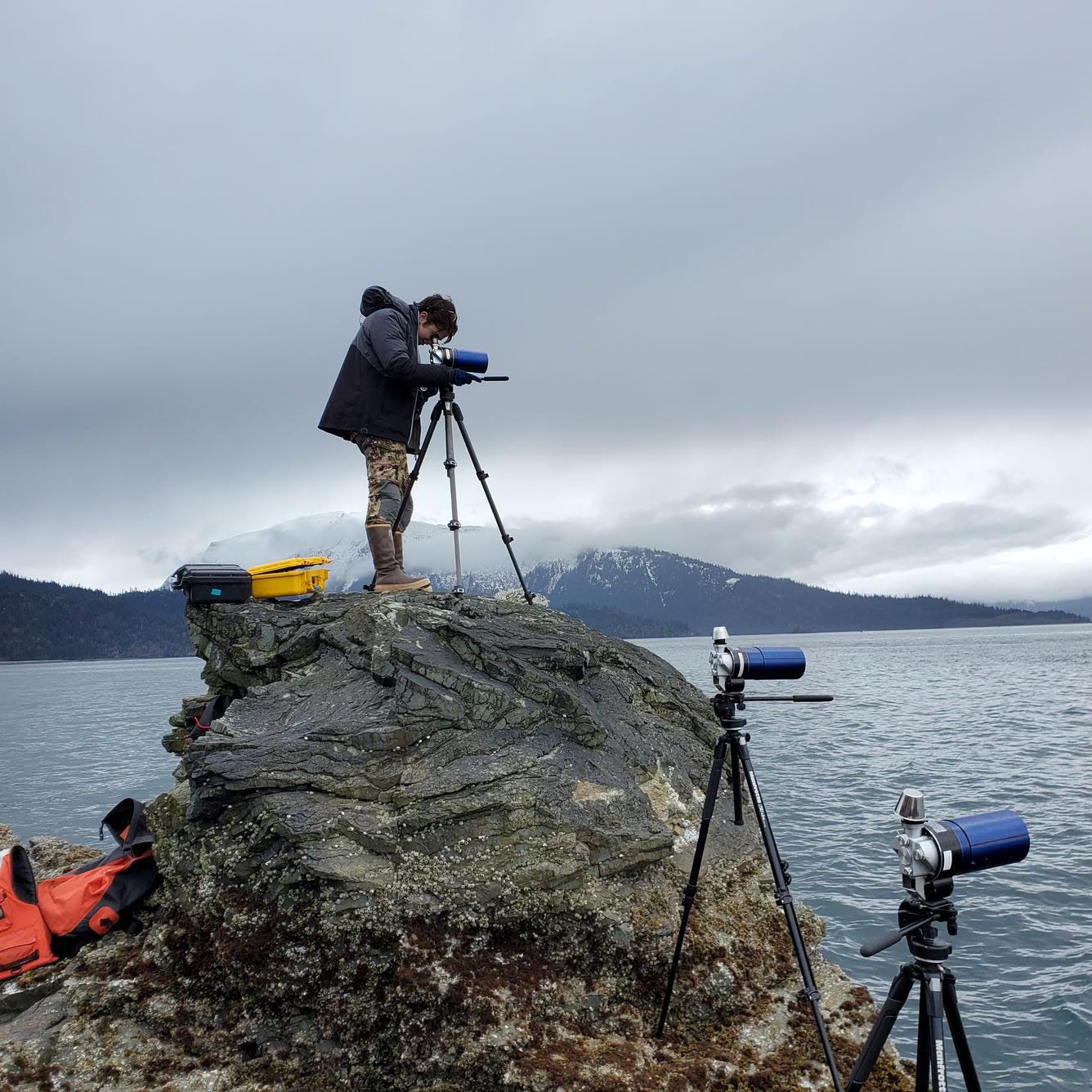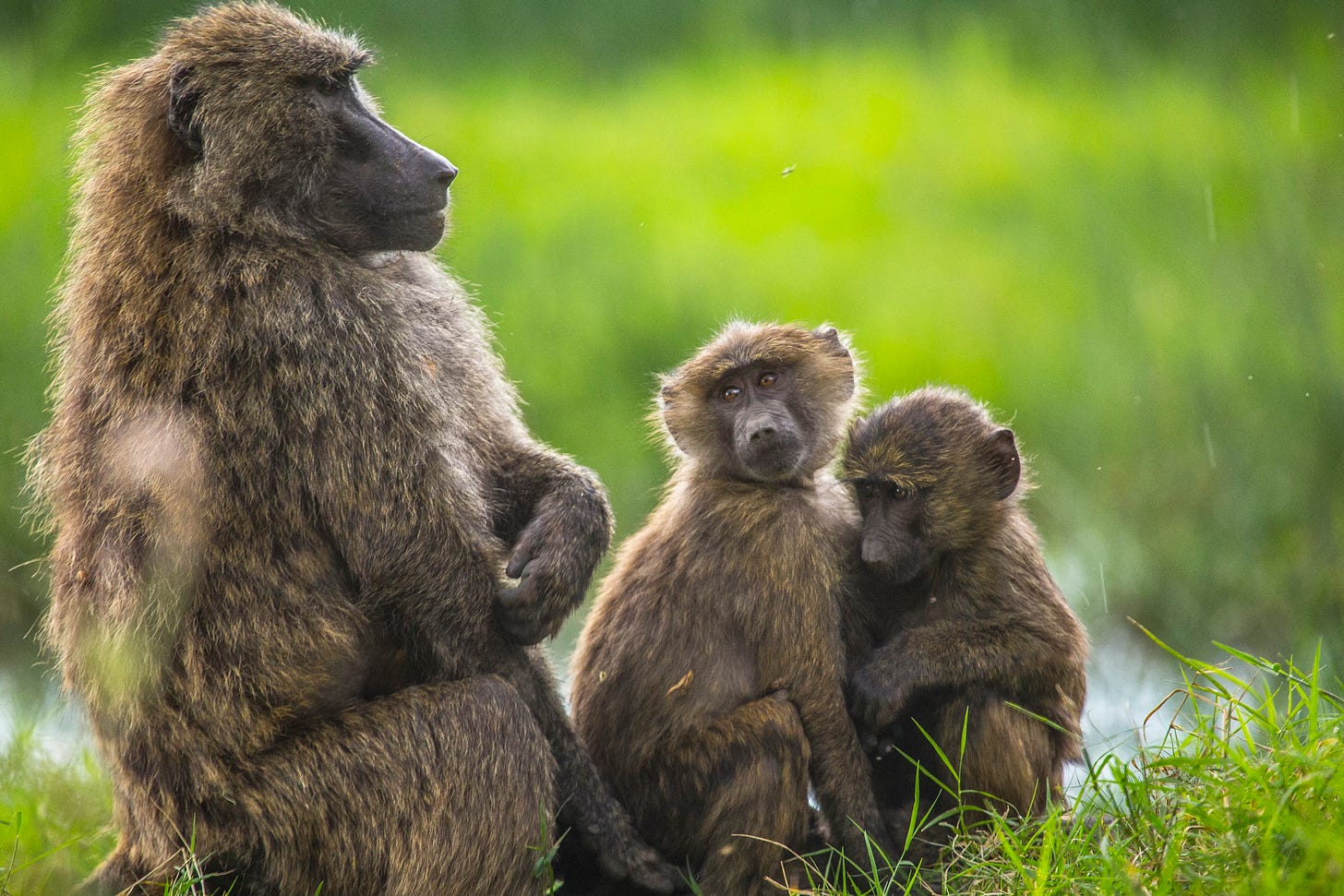When "Fat Rat" met the oyster farmers
Plus, watch some rare footage of one of the world's most elusive mammals
By Dan Fletcher
Here is today’s audio edition!
In the pristine, glacier-fed waters of Kachemak Bay, Alaska, a large sea otter nicknamed "Fat Rat" floats lazily around metal cages filled with Pacific oysters, looking like he's plotting a shellfish heist. But here's the surprise: he never takes a single oyster.
This unexpected restraint, documented in a study published in the Journal of Wildlife Management last month, reveals something encouraging about the relationship between recovering wildlife populations and human enterprise. Sometimes, if we design things right, everybody wins.
The research, led by University of Alaska Fairbanks graduate student Emily Reynolds, spent over 80 hours observing sea otter behavior around oyster farms in Kachemak Bay. What they discovered upends conventional wisdom: sea otters don't eat farmed oysters when they're protected by metal cages, and the otters' presence might actually benefit farmers by cleaning fouling organisms off equipment.
"Going into the project, there were a lot of unanswered questions about the interactions between sea otters and oyster farms," Reynolds explained in an interview with Alaska Sea Grant. "We thought that sea otters might be drawn to farms for resting or for feeding. They could preferentially forage at farms, either directly by feeding on the oysters or indirectly by feeding on other organisms that associate with farms or grow on farming structures."
This matters because Alaska aims to grow its mariculture industry nearly 50 fold, from today's $2.7 million to $100 million within 20 years. To do that, understanding how to coexist with wildlife is crucial for sustainable growth. And the stakes are high: Alaska hosts about 75% of the world's sea otters, making it a perfect testing ground for whether aquaculture and wildlife recovery can happen in the same waters.
The key to peaceful coexistence lies in the farming equipment itself. Alaska's oyster farmers use metal cages to protect their crops from predators, and these barriers prove effective against sea otters. Reynolds and her team found that while sea otters spent 49% of their time resting at oyster farms compared to just 27% in non-farm areas, they never once consumed a farmed oyster during the study period.
And that finding matters because sea otters eat a lot — 20–25% of their body weight per day. If the oysters were a bit more accessible, the species could quickly find itself in conflict with the farmers on their turf.
But instead, the research revealed that otters primarily use farms as convenient rest stops, taking advantage of the sheltered waters while leaving the oysters untouched. The otters do consume natural prey around the farms—primarily clams, crabs, and wild mussels—maintaining their typical foraging patterns. And this natural cleaning crew helps maintain equipment efficiency while the otters get an easy meal from the fouling organisms.
Greg Bates, who moved from Maine with his wife Weatherly to establish Alaska Shellfish Farms in Halibut Cove in 2007, has watched this coexistence play out daily. He's the one who named their most frequent visitor—that rotund otter called "Fat Rat." According to The Oyster Guide, Fat Rat and other sea otters "play all day around the cages," with Fat Rat looking like "he's just itching to get his mitts on their shellfish." But the metal cages work: Fat Rat has never breached them.
Dr. Brenda Konar, who supervised the research at UAF, emphasized the broader implications: "Alaska has vast potential for mariculture development, but the sustained use of these waters requires an understanding of the relationship between the farms and their environment. This project will help farmers, agencies, and the public better understand how sea otters interact with oyster farms."
This peaceful coexistence represents a turnaround from history. Sea otters were hunted to near extinction for their valuable pelts, with populations crashing from an estimated 300,000 to fewer than 2,000 by 1911. Alaska's current population of approximately 73,000 sea otters represents one of conservation's great success stories, though regional variations persist—the Southwest Alaska stock remains listed as threatened under the Endangered Species Act.
The otters' recovery coincides with Alaska's push to develop sustainable food systems. Unlike many agricultural frontiers that pit development against conservation, the oyster farming model suggests a different path. The cold, pristine waters that sea otters need to survive also create ideal growing conditions for oysters, which never spawn in Alaska's frigid temperatures and thus maintain consistent quality year-round.

The Alaska findings offer hope for other regions where sea otter populations overlap with aquaculture. In California, where approximately 3,000 southern sea otters range along the central coast, the shellfish industry watches nervously as the protected species slowly expands its range. British Columbia faces similar dynamics with at least 8,000 sea otters following successful reintroduction programs.
Reynolds emphasized that more research remains: "We still need to make comparisons with otters feeding in bays that have no farms present to gain a broader perspective on how farms may be influencing otter behavior." But the initial findings provide scientific backing for what farmers like the Bates family experience daily: sea otters and oyster farms can share the same waters peacefully when operations are designed with wildlife behavior in mind.
The study's most profound message extends beyond Alaska's icy waters: coexistence between wildlife and human enterprise isn't just possible—it can be mutually beneficial. Fat Rat may look like he's plotting to raid those oyster cages, but science shows he's content just to float nearby, cleaning the occasional mussel while the farmed oysters grow safely in their metal homes. In the shadow of towering glaciers where bears outnumber people 100 to 1, it’s nice to see a quiet revolution in human-wildlife relations unfolding —one playful otter and protected oyster at a time.
Quick links! 🔗
A wildlife photographer in Northern California hit the jackpot when his remote camera captured rare footage of Sierra Nevada red foxes in Lassen Volcanic National Park. With only 18-39 individuals remaining in the wild, these critically endangered foxes are among the world's rarest mammals. Randy Robbins hiked 5 miles through deep snow to retrieve his camera, discovering video of two different foxes - one collared for research - wandering the rocks at 8,500 feet elevation. While thrilled with the footage, Robbins admits his quest isn't over: "I still want my photo." The thick-furred foxes face threats from wildfire, drought, and competition with coyotes, making each sighting precious documentation of a species teetering on extinction's edge.
New research is flipping the script on primate power dynamics, revealing that "males dominate females" occurs in only 17% of primate populations (including baboons and chimps), while clear female dominance appears in 13% (like lemurs and bonobos). The remaining 70% exist in a flexible middle ground where either sex can be on top. Physical advantages favor male dominance, while female control over reproduction—like bonobos who can "mate with whoever they want, whenever they want"—tends to flip the power structure. According to lead researcher Elise Huchard, humans would likely fall into that flexible middle category, supporting evidence that our hunter-gatherer ancestors had more egalitarian relationships than later agricultural societies.







